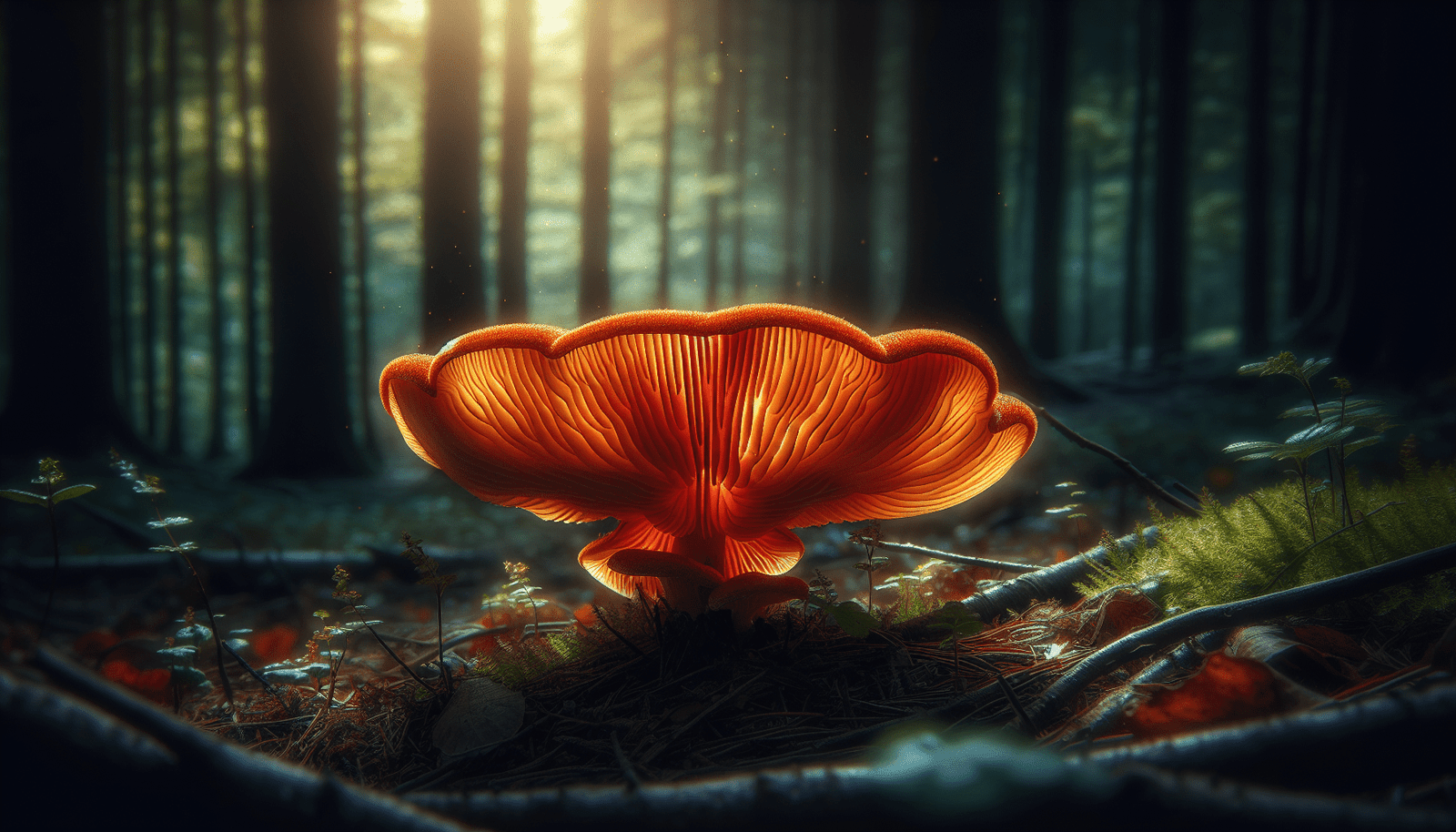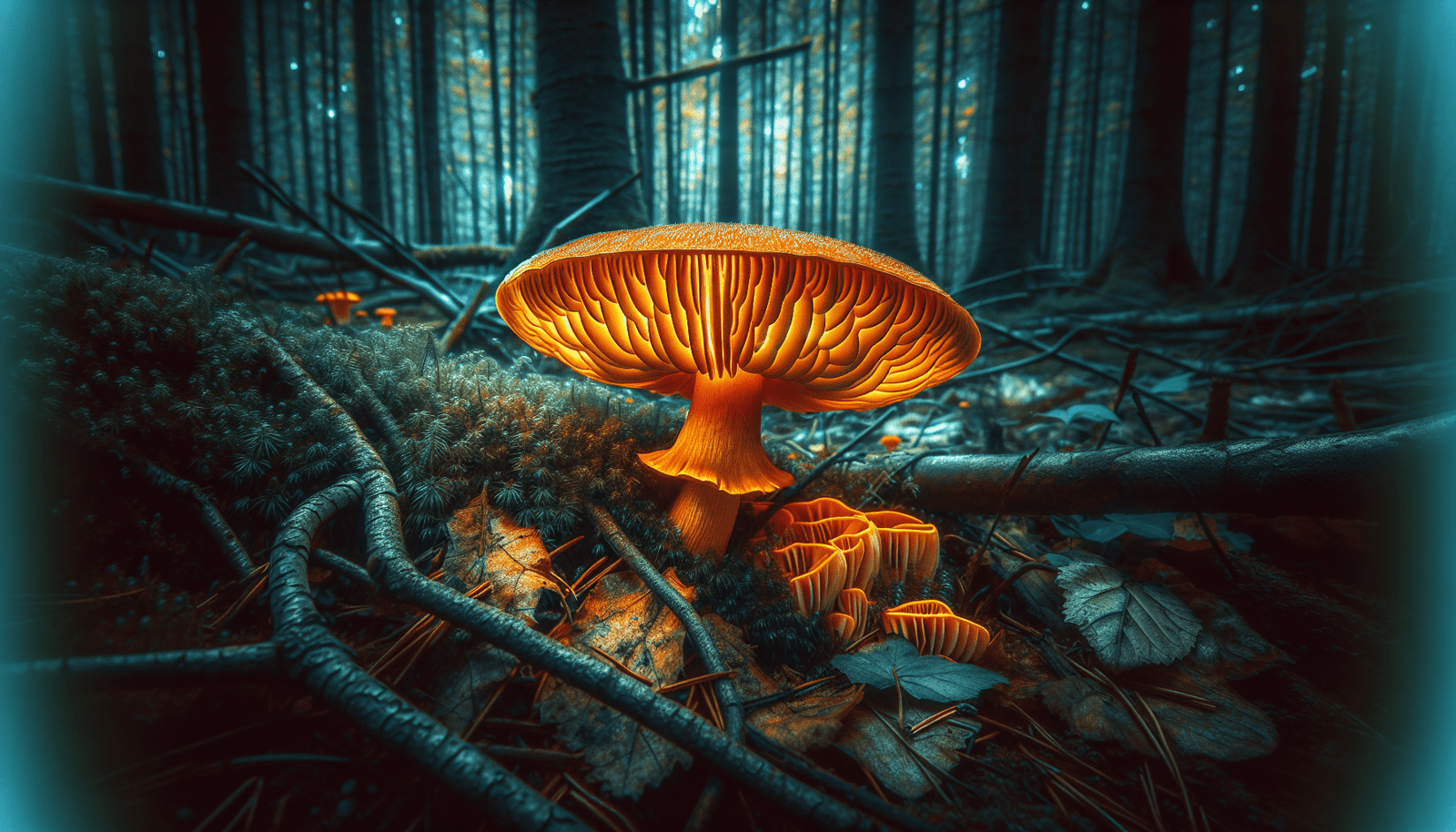Have you ever wandered through a forest and come across a striking orange mushroom, wondering if it might be safe to touch or eat? If so, you might have encountered Omphalotus olearius, a type of mushroom that is as fascinating as it is dangerous. In this article, we will dive into the world of Omphalotus olearius, commonly known as the Jack-o’-lantern mushroom, exploring its characteristics, habitat, potential dangers, and more. By the time you finish reading, you’ll have a well-rounded understanding of this intriguing but potentially harmful fungus.
Overview of Omphalotus Olearius
What is Omphalotus Olearius?
Omphalotus olearius is a species of fungus belonging to the family Marasmiaceae. Known commonly as the Jack-o’-lantern mushroom, it is infamous for its toxicity, an important aspect that distinguishes it from its edible look-alikes. It’s crucial to recognize this mushroom due to its potential to cause gastrointestinal distress in those who mistakenly consume it.
Historical Background and Significance
The history of identifying toxic mushrooms goes back centuries, with Omphalotus olearius frequently being a subject of interest due to its striking appearance and toxic properties. This mushroom has been studied extensively, not just for its toxicity but also for its unique bioluminescent properties. Understanding its history and significance can help you appreciate why it commands such attention within the mycological community.
Identification of Omphalotus Olearius
Appearance and Distinctive Features
The vivid orange or yellow color of Omphalotus olearius is one of its most recognizable features. It typically grows in clumps or clusters, resembling some edible species like chanterelles. The cap is smooth and can vary in size, usually ranging between 5 to 20 centimeters in diameter. These mushrooms have decurrent gills, meaning the gills run down the stem, which is another key identifier.
| Feature | Description |
|---|---|
| Cap Color | Orange to yellow |
| Cap Diameter | 5 to 20 cm |
| Gills | Decurrent, running down the stem |
| Growth Habit | Clusters or clumps |
Bioluminescence: A Natural Glow
One of the most intriguing characteristics of Omphalotus olearius is its bioluminescence. The gills of the mushroom emit a faint glow in the dark, a phenomenon caused by a chemical reaction involving luciferin. While this glow is not bright enough to be easily seen in normal conditions, it adds a layer of intrigue to this already fascinating organism.

Habitat and Distribution
Where Does Omphalotus Olearius Grow?
Omphalotus olearius can be found in deciduous forests across various regions, including parts of Europe and North America. The mushroom prefers to grow at the base of hardwood trees, such as oak and beech. It’s not uncommon to spot these mushrooms during the late summer to fall months, particularly after a rainy period.
Environmental Preferences
This fungus thrives in specific environmental conditions, particularly favoring moist, warm climates. Understanding its preferred growing environment can aid in identifying and avoiding areas where its presence is likely.
Toxicity and Health Concerns
Why is Omphalotus Olearius Poisonous?
The toxicity of Omphalotus olearius primarily stems from a group of compounds known as illudins. These compounds can cause a range of symptoms, from mild stomach upset to severe gastrointestinal distress when ingested. Although not typically fatal, the symptoms can be quite uncomfortable and distressing.
Symptoms of Poisoning
Consumption of this mushroom can lead to nausea, vomiting, diarrhea, and abdominal pain within a few hours. Most people recover fully with time and supportive care, but it’s crucial to seek medical advice if you suspect mushroom poisoning.
| Symptom | Onset | Severity |
|---|---|---|
| Nausea | Hours | Mild to moderate |
| Vomiting | Hours | Moderate to severe |
| Diarrhea | Hours | Moderate |
| Abdominal Pain | Hours | Varies |

Look-Alikes and Identification Tips
Distinguishing from Edible Varieties
One major concern is the similarity between Omphalotus olearius and certain edible mushrooms, such as chanterelles. While both can be vibrant in color and similar in habitat, chanterelles have forked gills and an overall different structure. Paying attention to these subtle differences can be life-saving.
Tips for Safe Identification
Foraging for mushrooms can be a rewarding hobby, but safety is paramount. Here are some tips to help ensure you’re making safe identifications:
- Always consult a reliable field guide.
- When in doubt, leave it out.
- Consider joining a local mycology club for expertise.
Ecological Role and Importance
Role in the Ecosystem
Despite its dangers to humans, Omphalotus olearius plays a vital role in its ecosystem. As a saprophytic fungus, it helps decompose fallen wood, recycling nutrients back into the soil. This process is essential for maintaining the health of forest ecosystems.
Interactions with Other Species
This mushroom not only impacts the environment in terms of nutrient cycling but also interacts with various animals. While toxic to humans, some animals can eat these mushrooms without harm, thus participating in seed dispersion and further mushroom propagation.

Harvesting and Handling
Why Avoid Harvesting Omphalotus Olearius?
Even experienced foragers should avoid harvesting Omphalotus olearius. Its toxicity makes it unsuitable for consumption, and there’s always a risk of contaminating other edibles through contact. If you’re not an expert, it’s safer to leave this mushroom where it grows.
Precautions If Encountered
If you come across these mushrooms, enjoy their beauty from afar. If contact is made, wash your hands thoroughly to avoid any transfer of toxins.
Recent Studies and Findings
Advances in Mycological Research
Recent research has delved deeper into the chemical properties of Omphalotus olearius, specifically its illudins. Scientists are investigating the potential medicinal applications of these compounds, considering their cytotoxic effects on cancer cells.
Implications of New Research
As studies continue, there may be potential for developing new medical therapies. However, it remains crucial to approach such discoveries with cautious optimism, recognizing the need for rigorous testing and validation.

Mythology and Folklore
Legends and Cultural Significance
Throughout history, the mysterious glow of Omphalotus olearius has inspired both awe and fear, contributing to myths about enchanted forests and will-o’-the-wisps. Its luminescence has been both celebrated and misunderstood across cultures.
Influence on Literature and Art
The Jack-o’-lantern mushroom has also permeated literature and art, symbolizing both the allure of nature’s beauty and the hidden dangers that lurk within it. It’s a reminder of the thin line between fascination and peril.
Conclusion: Stepping Cautiously in Nature
While the world’s forests are abundant with beauty, it’s vital to remember that not every brightly colored mushroom is safe to touch or consume. Omphalotus olearius serves as an essential reminder of the enchanting yet hazardous aspects of the natural world. Armed with knowledge and a cautious approach, you can enjoy nature’s wonders safely, appreciating both the seen and unseen magic that exists all around you. Respecting these boundaries not only keeps you safe but also preserves the delicate balance of ecosystems and the organisms within them.

